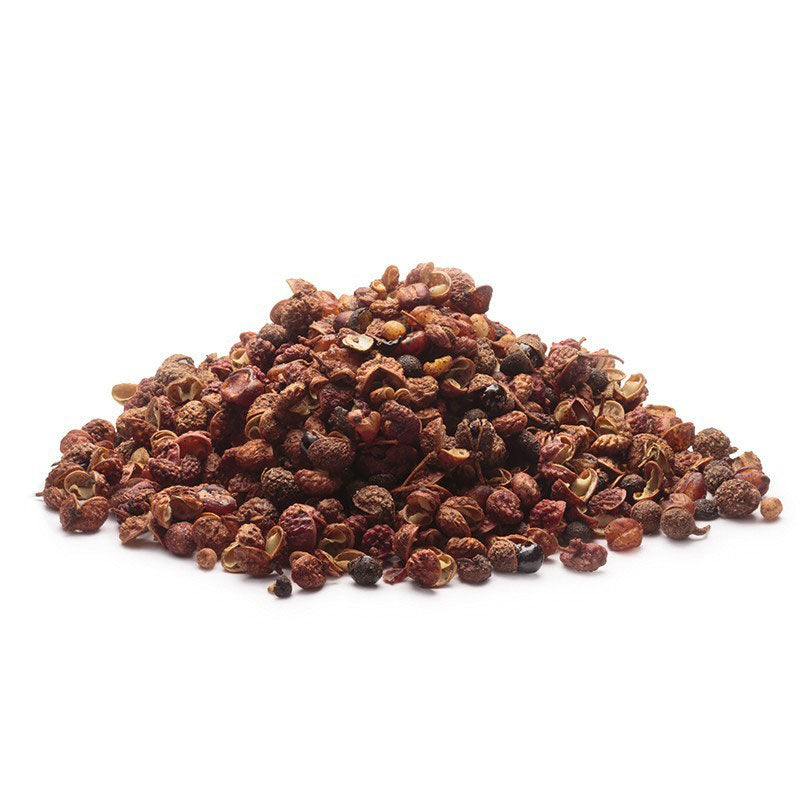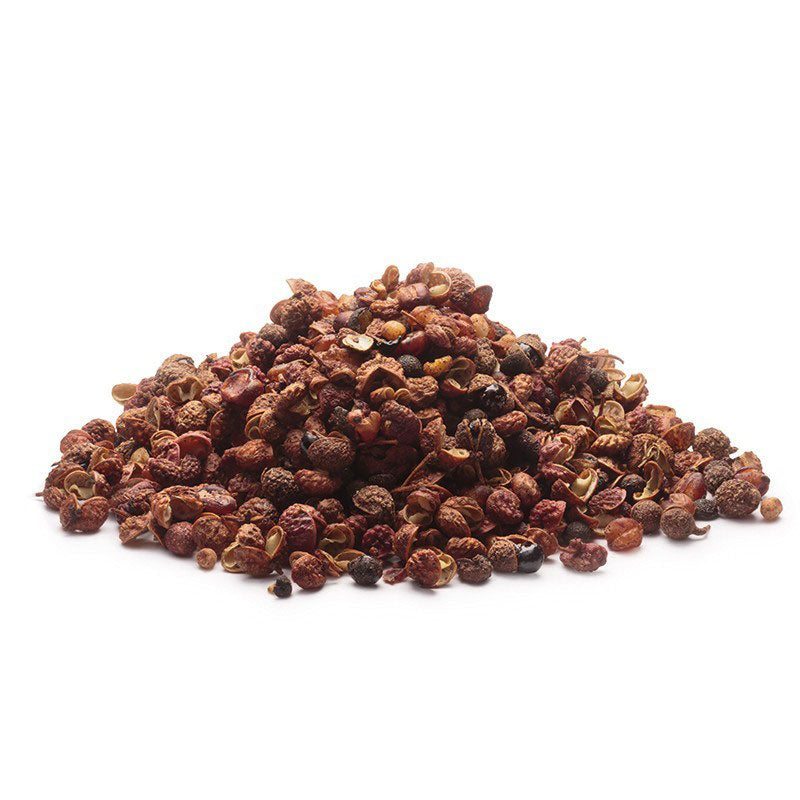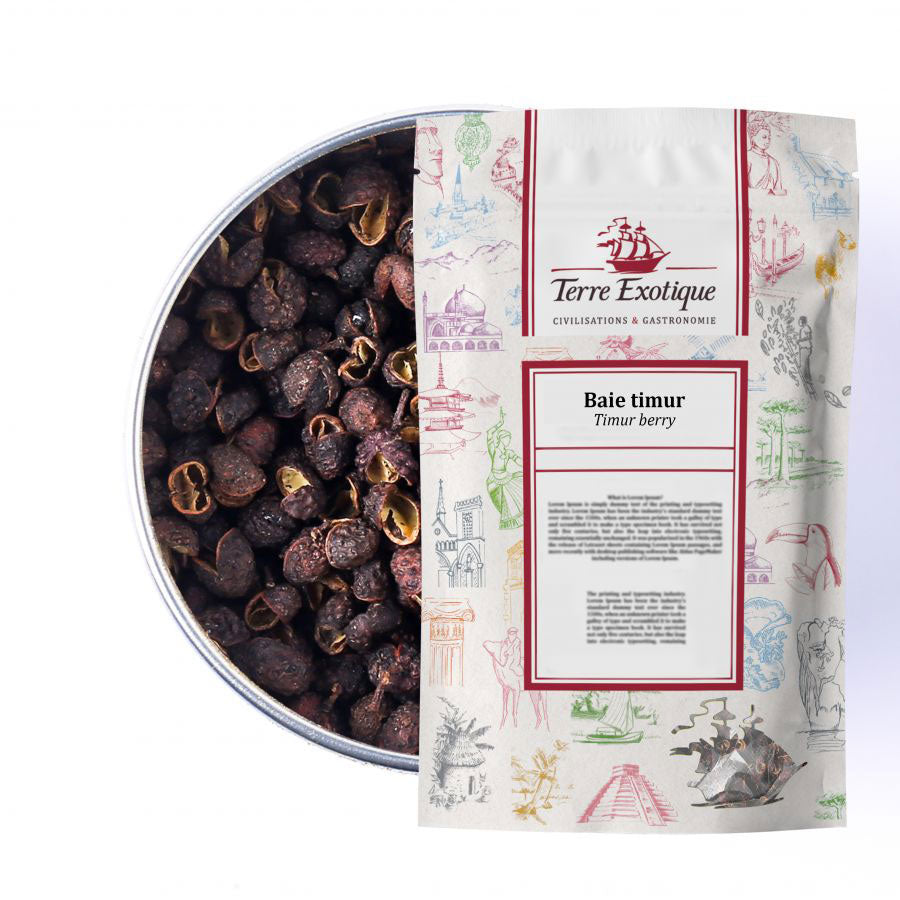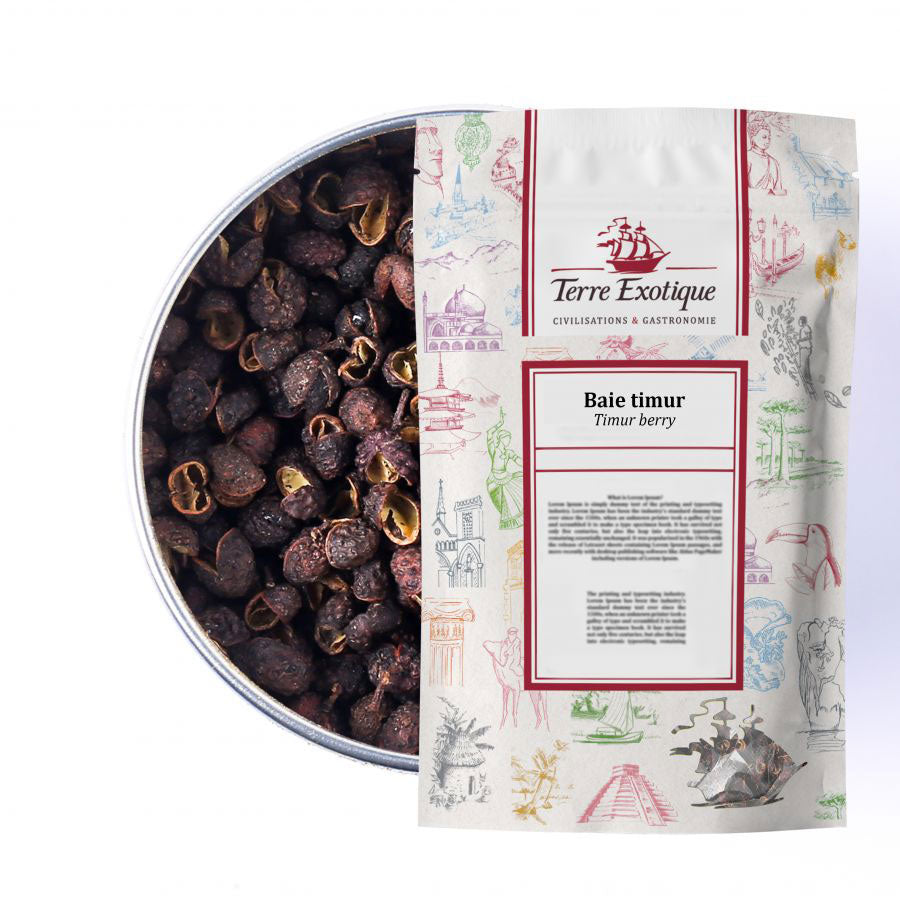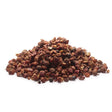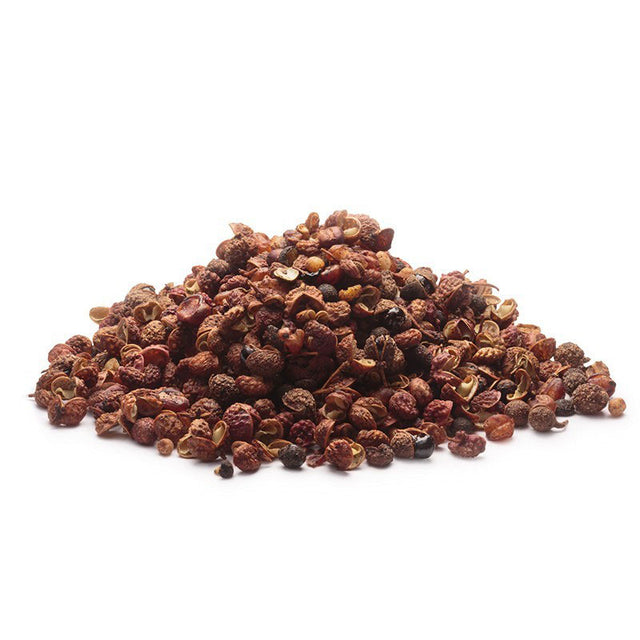- Timur Berries look almost like a mini chestnut, (without the spikes!). Timur berry releases aromatic notes of grapefruit, exotic fruit and camphor with subtle floral hints.
- Don’t overpower the superbly delicate and floral notes of this berry in strong flavoured dishes. Best used infused or cracked and sprinkled over just before serving
- Ingredients: Timur Berry
- Size: 500g
More Information
This Nepalese berry is picked from small endemic trees from the Zanthoxylum armatum species which is part of the Rustaceae family. It grows in the wild in the Mahabharat range between the Terai and the Pahar at altitudes of more than 2,000m. With its fresh and citrus notes it is easy to see why some call it the grapefruit pepper. This little berry is used in all dishes from the Terai lowlands of South Nepal. It is here in the birth place of Buddha, amongst the Tharu villages of thatched mud huts that these thorny bushes unfold their treasure.
Once harvested, Timur berries are dried then sorted by hand. Local women sort on average 5 kilos of berries a day on large bamboo trays. The sorting process involves 3 separate stages: removing branches and other bits, separating the black seeds from the pericarp, and finally, selecting the ripest berries based on their colour.
Timur berry is also known as the “grapefruit pepper ” due to its acidic zesty notes, but it is also called “Timut pepper”.
Where does this Timur berry come from?
The history behind this berry full of surprising aromas
The first time Timur berries were used dates back to the first settlements in South Nepal. Today, the berry is at the heart of Nepalese cuisine and is used in all traditional dishes. Whilst in Europe this berry is eagerly sought after by top chefs, in its home country Nepal, it is just an everyday spice and is sold on every market in Kathmandu.
Agriculture plays a major role in Nepal, each family is often self-sufficient thanks to its beehive, rice paddy and Timur berry plants.
“Timur” means “red pepper” in Nepali and includes all local pepper-like spices.
In the past, the roots of the shrub on which the berries grow were used to make colouring. Timur berry branches were also used as toothbrushes.

